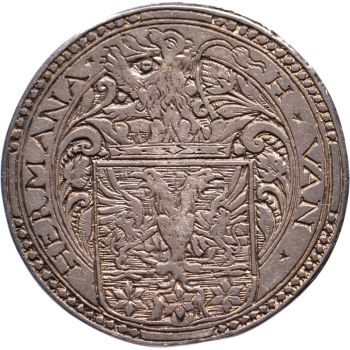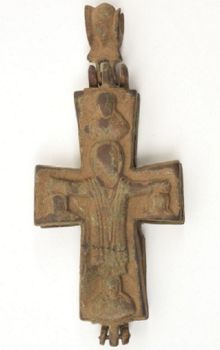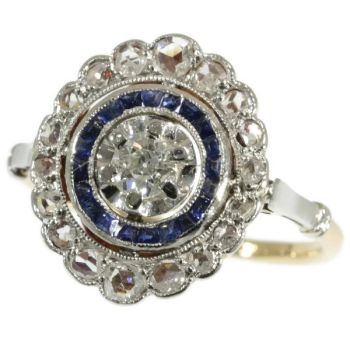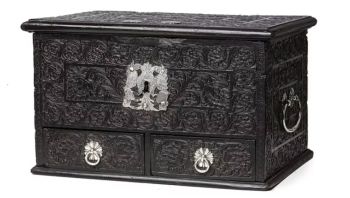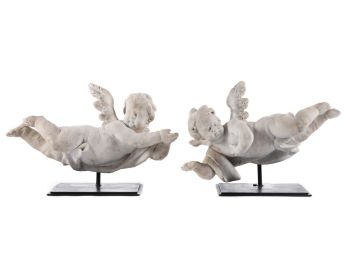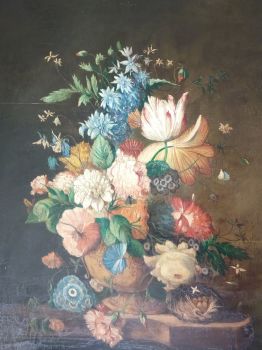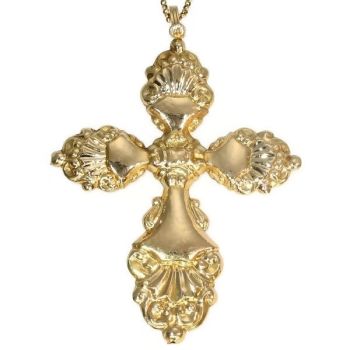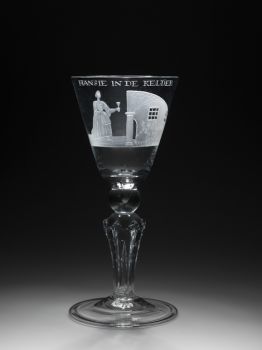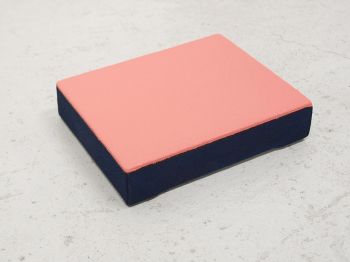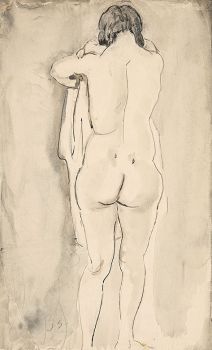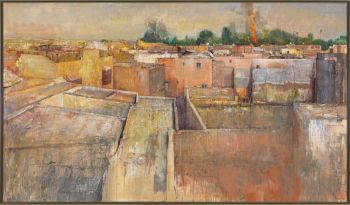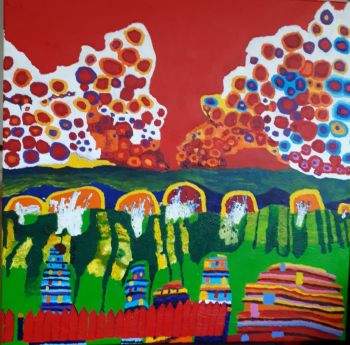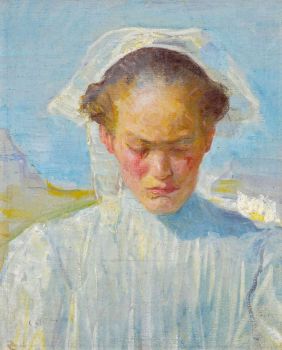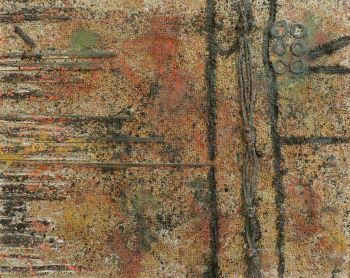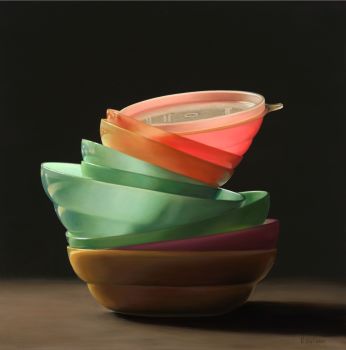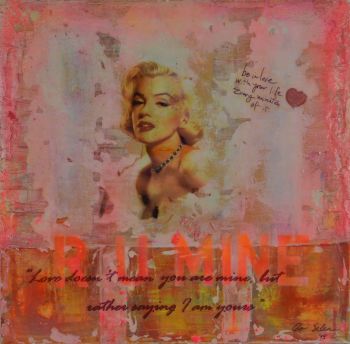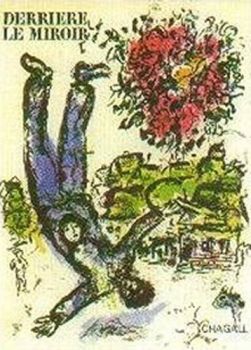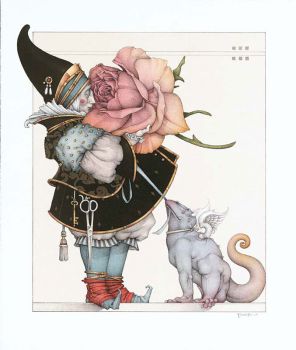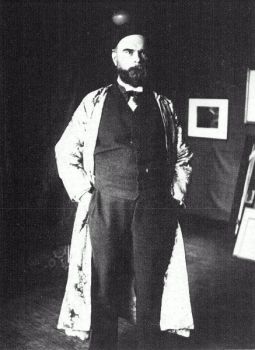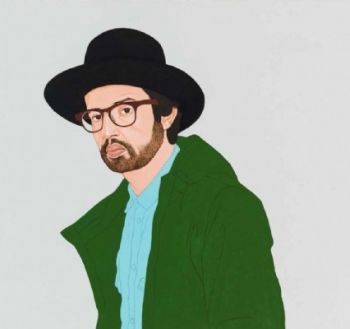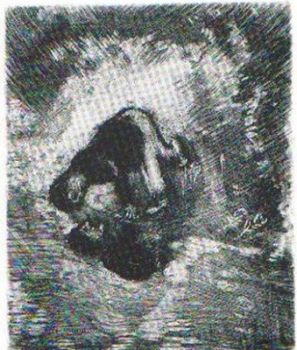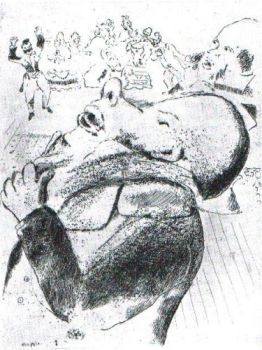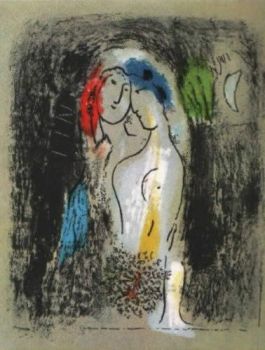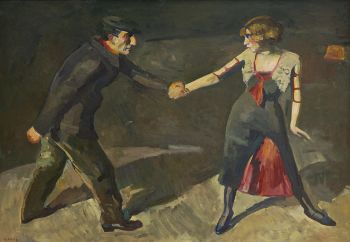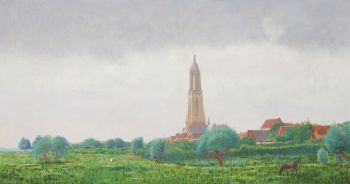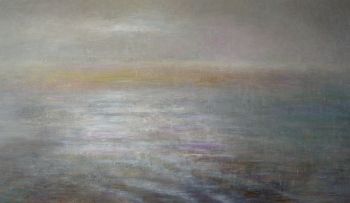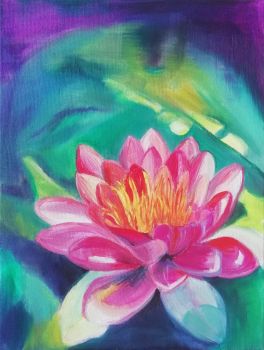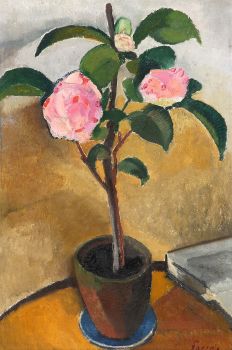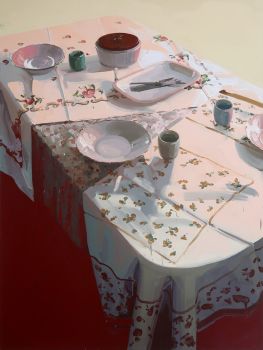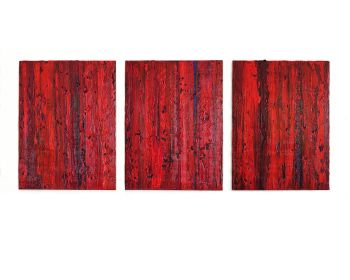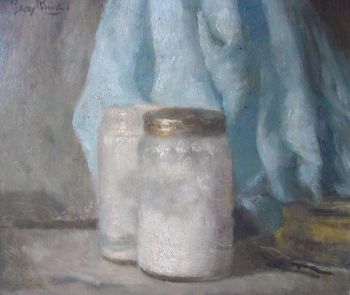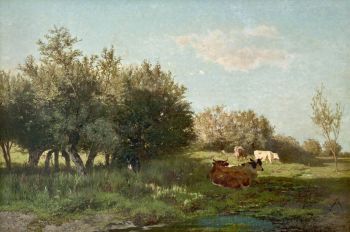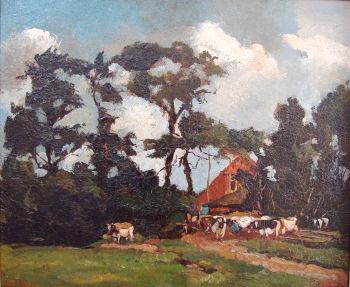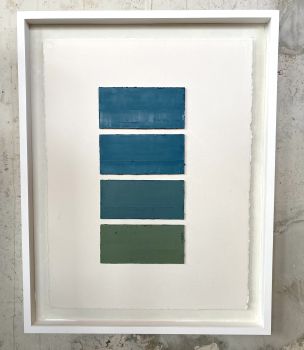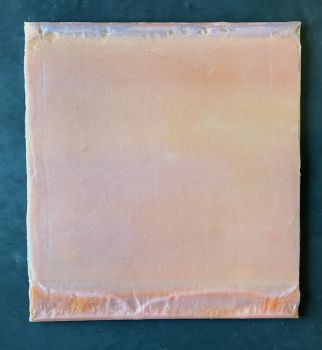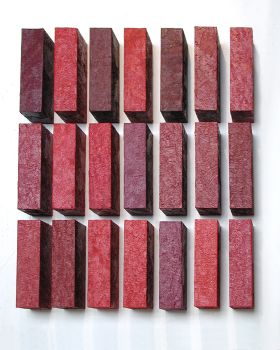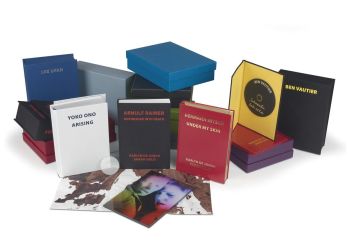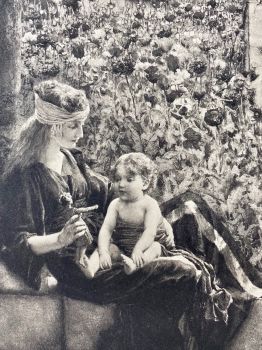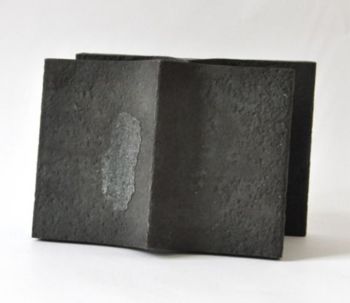Dutch School pair of equestrian paintings 19th Century 1800 - 1850
Artiste Inconnu
Peinture à l'huilePanneauPeindre
41 ⨯ 44 ⨯ 6 cm
Prix sur demande
Gallerease Selected
- Sur l'oeuvre d'artDutch School pair of equestrian paintings 19th Century.
The paintings have a nice theme and can be seen as a diptych: the wild horse with the blue clothes on one side and the tamed horse with the red clothes and details on the other side.
The meaning of the colors are open for discussion. The blue color is known as Prussian blue and the interesting thing is that the horse seems to be a Holsteiner and this is a Prussian horse breed.
The art pieces are painted on a wooden panel.
The paintings are cleaned and in good condition. Only one panel has a crack in the painting as can be seen on the photos. The frames are beautiful and without any damage.
The art pieces are original made without frame. Just the wooden panel. This can be assummed because the wooden panels has both a string attached to it to hang it on the wall directly.
The frames are more recent, but nicely decorated and it fit beautiful with the paintings and give it the power it deserve! - Sur l'artiste
Il peut arriver qu'un artiste ou un créateur soit inconnu.
Certaines œuvres ne doivent pas être déterminées par qui elles sont faites ou elles sont faites par (un groupe d') artisans. Les exemples sont des statues de l'Antiquité, des meubles, des miroirs ou des signatures qui ne sont pas claires ou lisibles, mais aussi certaines œuvres ne sont pas signées du tout.
Vous pouvez également trouver la description suivante :
•"Attribué à …." A leur avis probablement une oeuvre de l'artiste, au moins en partie
•« Atelier de …. ou « Atelier de » À leur avis, une œuvre exécutée dans l'atelier ou l'atelier de l'artiste, éventuellement sous sa direction
•« Cercle de… ». A leur avis une oeuvre de la période de l'artiste témoignant de son influence, étroitement associée à l'artiste mais pas forcément son élève
•« Style de … ». ou "Suiveur de ...." Selon eux, une œuvre exécutée dans le style de l'artiste mais pas nécessairement par un élève ; peut être contemporain ou presque contemporain
•« Manière de… ». A leur avis une oeuvre dans le style de l'artiste mais d'une date plus tardive
•"Après …." A leur avis une copie (quelle qu'en soit la date) d'une oeuvre de l'artiste
•« Signé… », « Daté… ». ou « Inscrit » À leur avis, l'œuvre a été signée/datée/inscrite par l'artiste. L'ajout d'un point d'interrogation indique un élément de doute
• "Avec signature ….", "Avec date ….", "Avec inscription …." ou "Porte signature/date/inscription" à leur avis la signature/date/inscription a été ajoutée par quelqu'un d'autre que l'artiste
Êtes-vous intéressé par l'achat de cette oeuvre?
Artwork details
Related artworks
Unbekannter Künstler
Edwardian Ring mit Farbwechsel Saphir1910 - 1920
Preis auf AnfrageAns Hemke-Kuilboer Juwelier & Antiquair
1 - 4 / 12Unbekannter Künstler
Een Gotische zuidelijke Nederlanden wandklok1580 - 1590
Preis auf AnfrageNico van den Assem restauratie
Unbekannter Künstler
Cristallo façon de Venise Trinkglas1600 - 1650
Preis auf AnfragePeter Korf de Gidts - Antiquairs
Unbekannter Künstler
A pair of angels Antwerp, 17th century, Carrara marble17th century
Preis auf AnfrageFrederik Muller
Johannes van Dreght
Antique Dutch still life flowers in vase1740 - 1800
Preis auf AnfrageGallerease Selected
Unbekannter Künstler
A gem-set ivory sculpture of an Ottoman sultan1700 - 1750
Preis auf AnfrageZebregs & Röell - Fine Art - Antiques
1 - 4 / 24- 1 - 4 / 24
Willem Witsen
Vintage portrait photograph of Paul Verlaine (standing)1850 - 1900
Preis auf AnfrageKunsthandel Pygmalion
1 - 4 / 24Gerard Bilders
The 'Uiterwaarden' at Oosterbeek (flood plains)1861
Preis auf AnfrageStudio 2000 Art Gallery
1 - 4 / 24- 1 - 4 / 12










